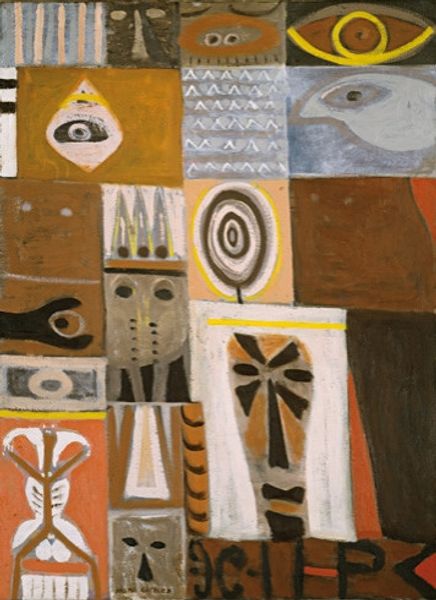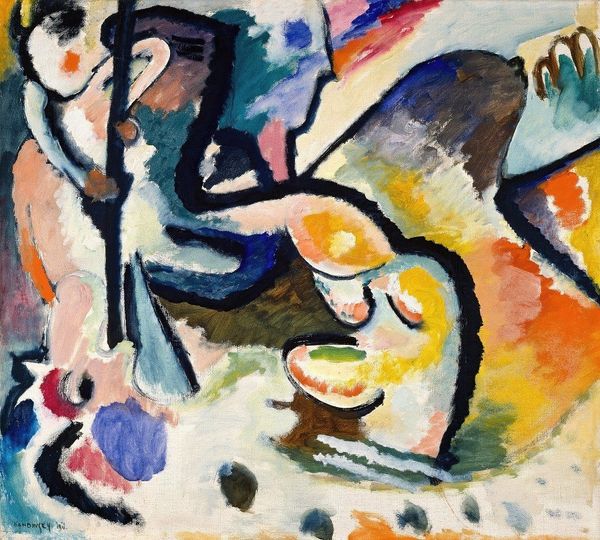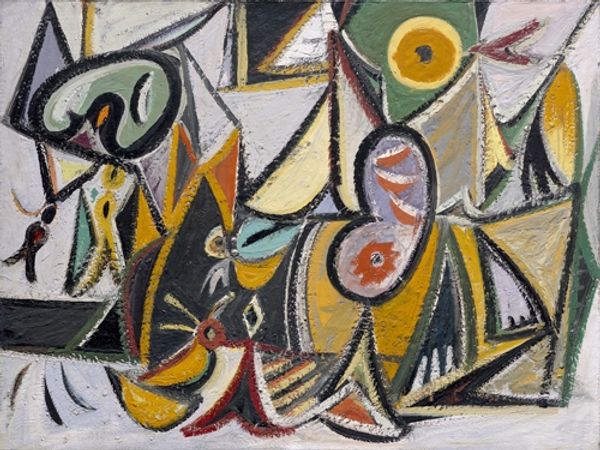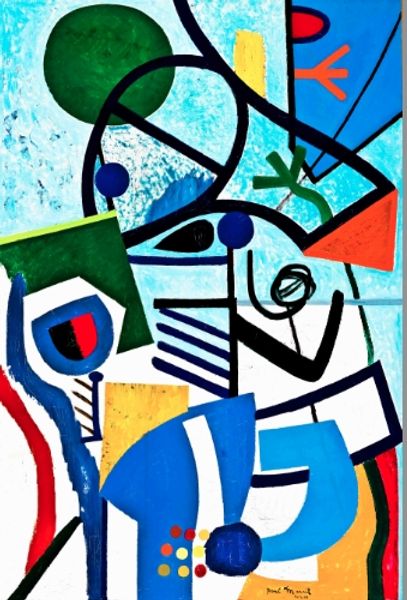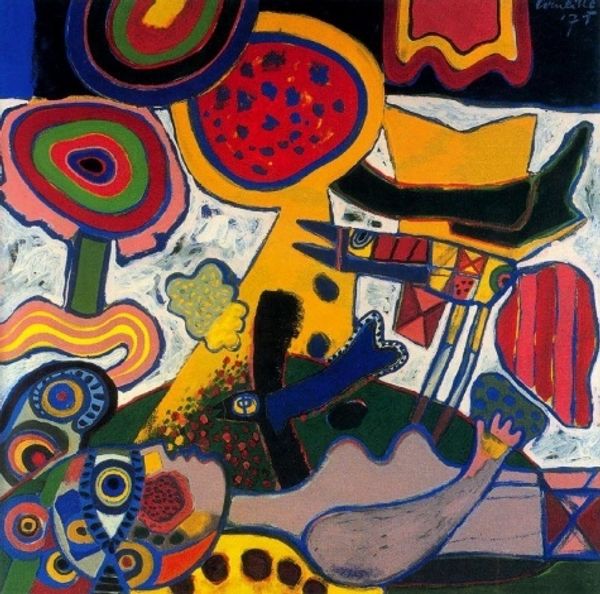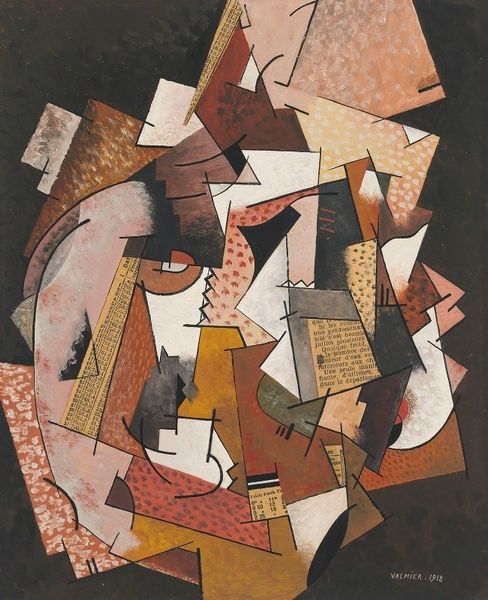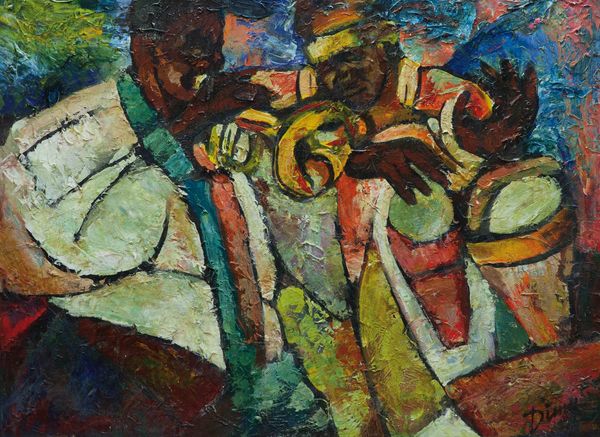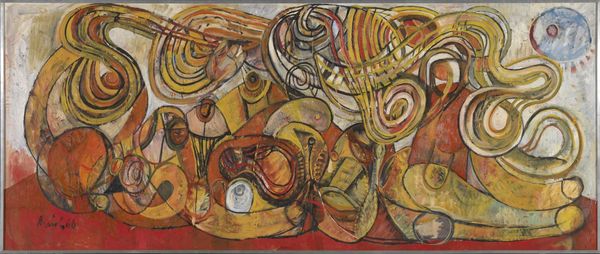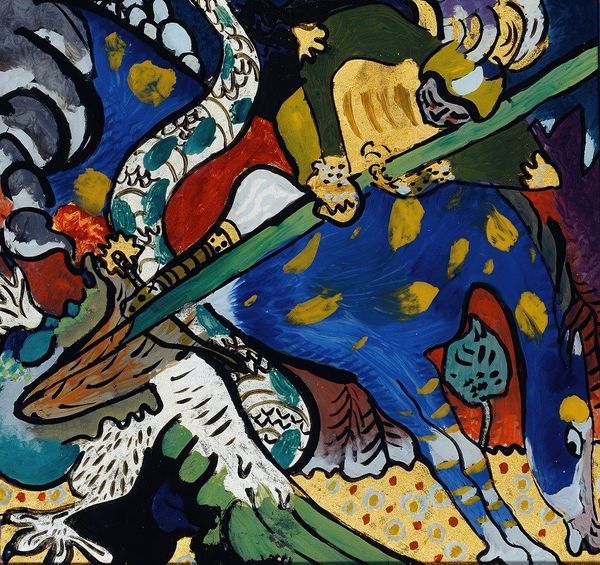
Dimensions: 73 x 100.4 cm
Copyright: Frantisek Kupka,Fair Use
Editor: So, this is Frantisek Kupka’s “Syncopated Accompaniment (staccato),” created around 1928 using acrylic paint. It feels like a chaotic dance, all sharp angles and layered shapes. What do you see in this piece? Curator: It's a fascinating intersection of visual art and music. Consider how 'staccato,' in musical terms, signifies notes that are sharply detached or separated. Now, look at how Kupka translates this auditory experience into visual forms. Editor: The fragmented forms and high-contrast colors, maybe? Curator: Precisely. Kupka uses these elements to create a sense of rhythmic disruption, reflecting the abrupt and disjointed nature of staccato. What do you make of the recurring circular motifs within the painting? Editor: Circles… hmm, maybe representing musical notes themselves? Or echoing the circular movements of conducting? Curator: It's possible. But let’s delve a bit deeper. The circle has been used across millennia to symbolize totality, the infinite, unity. So perhaps these circles, disrupted and syncopated, are Kupka’s way of challenging traditional notions of harmony, reflecting the burgeoning dissonance in society during the interwar period. Think about how jazz music was emerging and challenging established forms… Editor: That makes a lot of sense. It’s like the painting itself is a visual disruption of the established order. Curator: Precisely. Kupka’s abstract language speaks to the breaking down of traditional forms. He presents the painting as cultural memory, a sense of continuity but in its disjointed way. It is all part of something larger. Editor: I'll definitely hear music differently now, seeing shapes, when listening! Curator: Indeed, and seeing shapes as sounds. A complete sensory transformation.
Comments
No comments
Be the first to comment and join the conversation on the ultimate creative platform.

